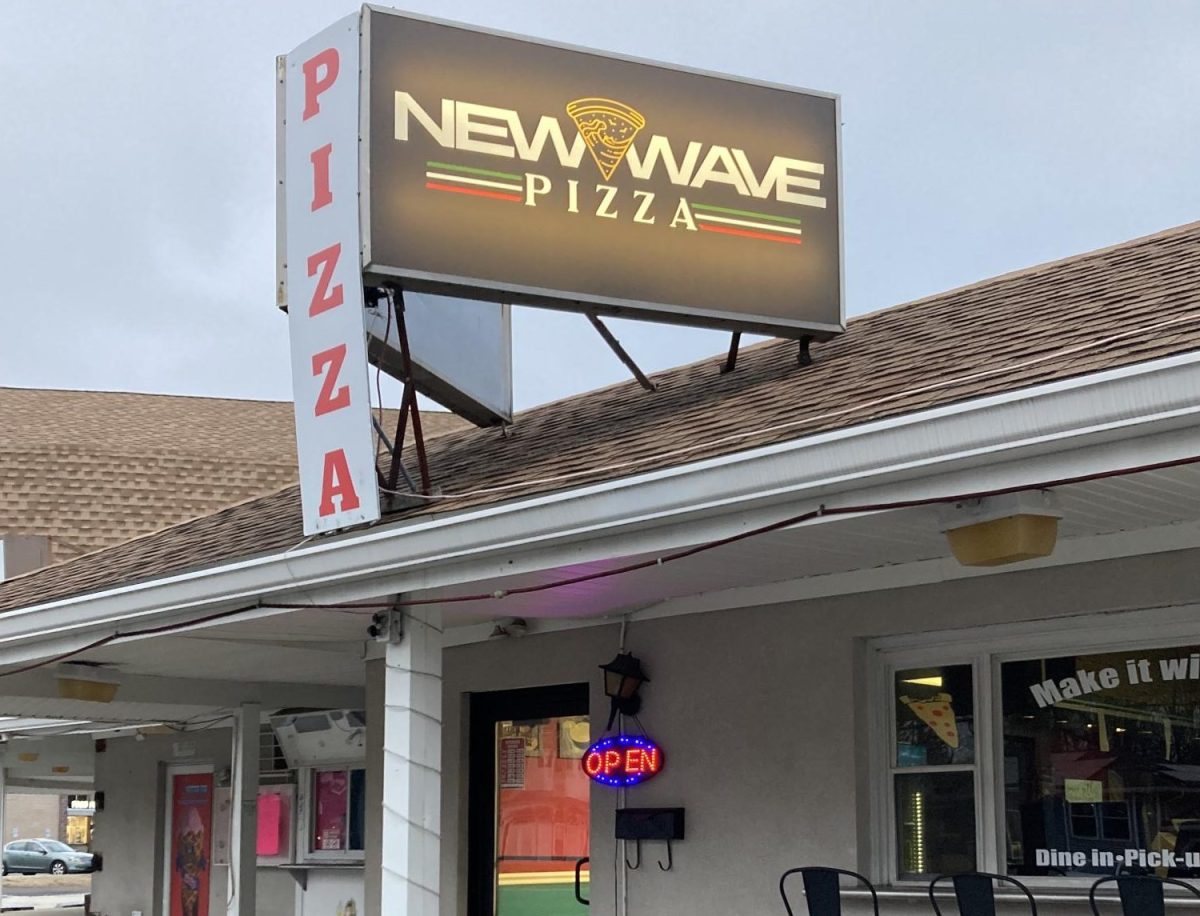Activist alum takes racial equality from Cherry Hill to the capital

Courtesy of www.zerotolerancedotcom1.wordpress.com
West Alumnus protests against racial discrimination
November 18, 2015
“We will not tolerate the use of any words or actions that put people down because of race, culture, religion, appearance…” says every recent graduate of Cherry Hill High Schools East and West. This statement is printed in bright yellow on the walls of every classroom at the Cherry Hill High Schools. Most students heed its message, and many are inspired by it. But few have the integrity to live by these words of scholarly wisdom, using them as an insipiration to speak out against discrimination. On August 15, 2015, 19-year-old Morgan Smith, Cherry Hill High School West alumnus (‘14) represented these few student body standouts when she organized a formal and highly publicized protest against racially motivated police brutality, as well as general racial discrimination, in Washington, DC this past summer.
“It was kind of just something that came to me. At the time, I was really upset because of everything going on,” Smith said of her inspiration to begin the protest. At the time, the case of Sandra Bland, a 28-year-old black woman who died in jail three days after what the Huffington Post called “a traffic stop gone wrong,” was very prevalent in the media, as well as the case of Samuel DuBose, a 43-year-old black man who was fatally shot by a police officer on July 19. Distraught by such awful incidents of racist cruelty, Smith took to Twitter to raise support. “I was like, ‘Hey, if I started a protest out here in DC… who would come?’” Smith said. Before long, she amassed considerable positive feedback and began to organize meetings. The protest, which came to be dubbed Blackout DC, was organized primarily through Twitter. Smith said that although she had previously done local activism work in the DC area where she lives and works, Blackout DC was her first major activism experience as an organizer.
Smith recalls that the hardest part of organizing a protest was in obtaining a protest permit; in Washington, DC, any peaceful protest attended by over 100 people must take this step. “We knew that we wanted to march, but we had to make sure that we could actually do it without being arrested,” said Smith. She added that although the police in her area stalled for quite a while before granting her request, she was eventually given permission to march, having received 200-300 RSVPs to the event online. “Once we had our people,” Smith remembers, “We just kind of did it on our own.” Smith is not formally affiliated with African-American social justice organizations such as Black Lives Matter, although she is part of the overall Black Lives Matter movement. She used the crowdfunding platform YouCaring to raise a total of $658 dollars, which was used to purchase necessities such as platforms, microphones, and food.
Preparation for the big day involved mapping out a route for the protest, as well as choosing backup routes in case protesters got cut off or redirected by the police, Smith said. Several speeches and a tribute to those killed by police brutality were also prepared. “Getting people involved was actually one of the easiest parts…when we put it out online, people were already upset about everything that was going on, so it was very easy to want to RSVP,” said Smith, who estimates that the total attendance for the day’s events was between 300 and 400 people. The Blackout DC protest commenced at 2 p.m. on August 15, 2015. The protesters marched until 6 p.m., from the White House to the Capitol, chanting “Black Lives Matter!” among other slogans and carrying Smith’s tribute – a carboard coffin – the entire way. The coffin was filled with objects symbolizing several people who had been victims of fatal police brutality and whose stories had now been chosen to represent the movement. Cigarettes represented Sandra Bland and Eric Garner, who in life had been smokers; a pack of Skittles and a bottle of Arizona iced tea were chosen for Trayvon Martin, who had been carrying these items when he was shot by George Zimmerman back in 2012; a custom license plate was made out of cardboard for Sam DuBose, whose fatal arrest was initiated by the absence of his car’s front license plate; a teddy bear symbolized seven-year-old Aiyana Jones, who was killed in 2010 during a police raid of her home; and a cross represented the Charleston Nine, who died in a Charleston, South Carolina church shooting back in June. The names of the tributees were read, and their stories were shared with the crowd. As a result of the protest, traffic was blocked briefly along federal highway I-395, according to the International Business Times.
In a Facebook post from August 21st, participant Rachel Wilson said that “the show of solidarity was so amazing to be a part of,” referencing a feeling of connectivity and camaraderie with her fellow protesters. Smith said that she definitely agrees. “During the tribute, there was a moment in which…everyone was literally crying together,” she said, adding that that it was great to see people of all different racial and cultural backgrounds connecting to face a global issue. “No matter what color… there was literally this point where everyone felt so connected, and everyone was just literally holding hands…even I was crying during the tribute.”
Besides providing an experience of such rare unity and strength, Blackout DC also gave Smith the opportunity to meet some amazing people. Deray McKesson, famed civil rights activist and member of the pro-African-American organization We The People, attended the event. McKesson, 29, has protested in Ferguson and participated in sit-ins in St. Louis, among other things, in order to raise awareness against racial discrimination. “I’ve really looked up to McKesson] for so long… he’s helped so many people and so many communities, he’s been a part of so many protests. Just to see his face there, standing with us… he was so down to earth,” Smith recalled. Janelle Monae, R&B singer and CoverGirl spokeswoman, also made an appearance at the beginning of the protest. Smith even met her girlfriend, fellow organizer Zuria Forrest, at Blackout DC. Smith remembers that on the day of the protest, all of the stress and tension of planning and preparing fell away, and she felt as if she was marching with family. “You could just feel the connectivity and the solidarity between people…it felt like we were a group, it felt like we had each other’s backs,” she said.
While every Blackout DC attendee seemed highly motivated to battle racism, for Smith it has special meaning. As a proud Afro-Cuban, she said that growing up she had faced racism in the form of social exclusion, from the parents of her friends, and even in her career, as she was once told by an employer that her curly hairstyle was offending customers. “There have definitely been times where I’ve felt that burn of being discriminated against…and that made me really want to take a step, even from a personal aspect, as well as from a global and national aspect,“ Smith said, who maintains that her African ancestry is a huge part of her personal identity. While she hopes to continue making activism a part of her lifestyle, she recognizes that protests are not the only way, or even always the best way, to spread the word for one’s cause. “I’m a very big believer in fighting for your rights, but at the same time you do have to be smart about it,” said Smith, adding that “protesting alone isn’t going to bring about the change we need.” As she attends Nova College in Alexandria, VA, and also has a job working for Apple, she is currently less active in DC area activism, though she still circulates petitions and spreads information on social media whenever she can while the movement works on figuring out their next big action.
So what advice would Smith give budding activists back in Cherry Hill? “It’s kind of about finding what way you can make an impact as an activist, and then putting yourself out there and just doing it. It’s going to be scary at first, it’s going to be hard and it’s going to be confusing, but you have to let your heart lead you.” She cautioned that while you should not let yourself be driven purely by emotion, if you feel there is an issue in this world and it should be the duty of humanity to address it, do not hesitate to jump right in and seek out the change you wish to see. “Activism isn’t just for fun… if you can save someone’s life,” Smith declared, voice rising in excitement as she remembered the hours and hours spent this summer working to battle racism and gain justice for those lost in the fight, “just by going to a meeting, or going to a community, or marching in a protest, then why not do it?”







